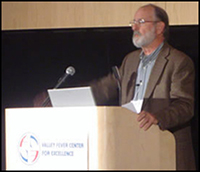Research around Early Events in Coccidioidomycosis
Dr. Fariba Donovan is leading research to decrease the time it takes to diagnose Valley fever. The premise is that an earlier diagnosis will cut down on unnecessary medical tests and unneeded treatments. Also, this keeps people from getting antibiotics they don’t need. This work uses clinical findings to assist in faster diagnoses of Valley fever and supports providers in how to better manage this disease. A rapid lateral flow assay is a tool used for this.
Additionally, patients who take biological response modifiers (BRMs) for autoimmune disorders such as rheumatoid arthritis, inflammatory bowel disease, or psoriasis sometimes are affected severely by Valley fever. Valley Fever Center researchers are investigating if taking these medications increases the risk of adverse outcomes from this disease.
Canine Valley Fever Vaccine Project
The Canine Valley Fever Vaccine Project is a joint public/private venture of the Valley Fever Center for Excellence (University of Arizona) and Anivive Lifesciences, Inc., through an NIH grant [RO1-AI-132140] to develop a vaccine to prevent Valley Fever in dogs. Formulation of a vaccine takes time, and clinical trials will be underway in the next several months.
- Tech Launch Arizona Selects Anivive as Startup of the Year at 2024 I-Squared Expo and Awards
- Valley Fever Vaccine Update - November 2021
- Study Shows Vaccine Protects Dogs Against Valley Fever





